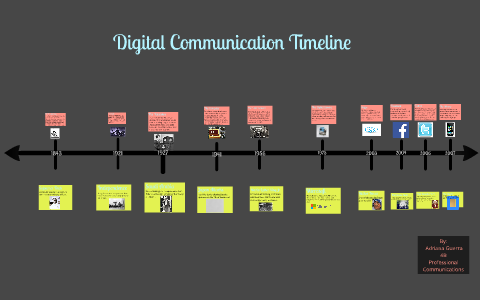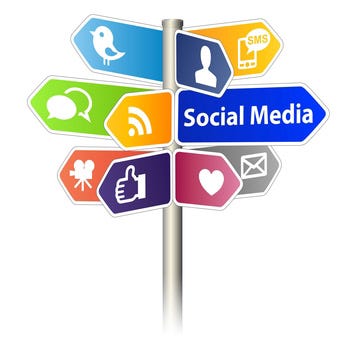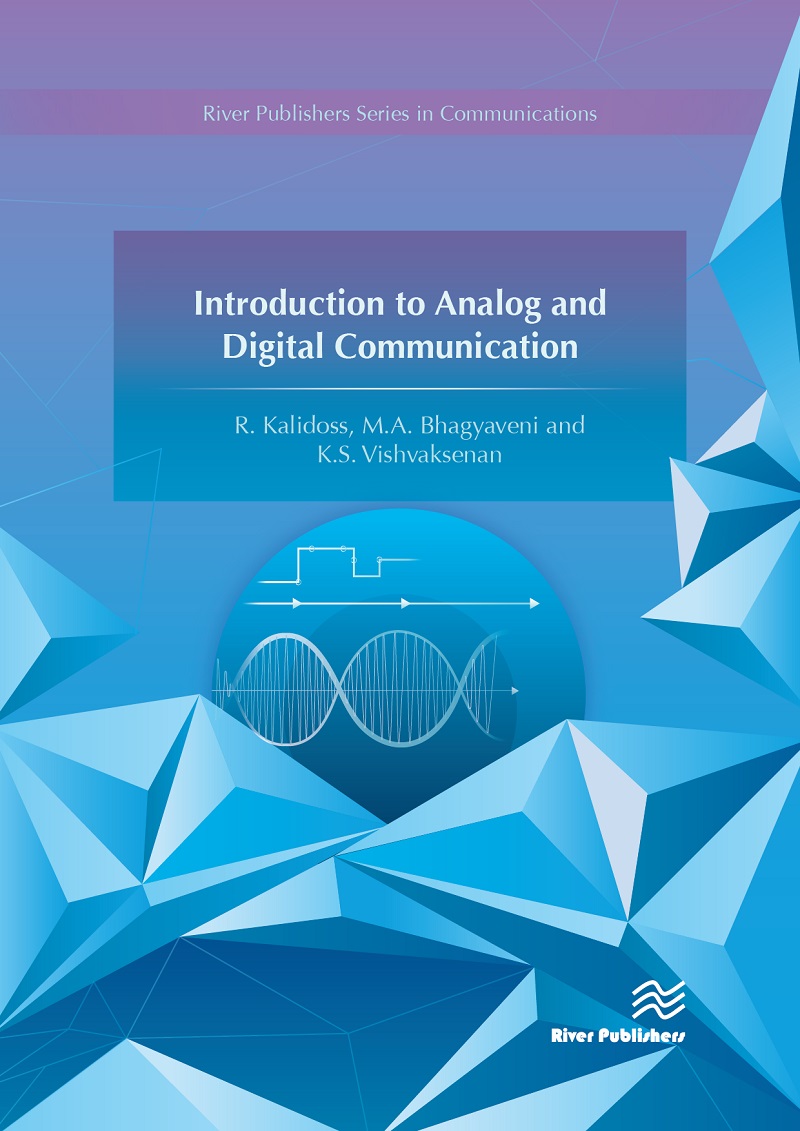Digital Communication
Definition: Analog and digital communications are the two types of data transmission system however several factors generate the difference between the two. The major difference between analog and digital communication lies in the signal being transmitted. In analog communication, the message signal is in analog form i.e., continuous time signal.
- Digital Communications Rf
- Digital Communications Specialist
- Digital Communication And Collaboration
- Digital Communication Analyzer
- Digital communication can be defined as the electronic exchange of information. It can be in the form of cell phones, social networking, instant messaging, emailing, blogging, video conferencing, wikis, and much more. All these are fast and easy ways to communicate that have many benefits.
- Digital Communication is the exchange of information electronically. Recently, there has been a huge amount of change and development in digital communication. One of the significant changes within the digital revolution is a person’s ability to communicate with other people. In the 19th century, forms of communication were limited.
- INTRODUCTION TO DIGITAL COMMUNICATION. Communication systems that first convert the source output into a binary sequence and then convert that binary sequence into a form suitable for transmission over particular physical media such as cable, twisted wire.
In a Digital Communication System, the messages generated by the source which are generally in analog form are converted to digital format and then transmitted. At the receiver end, the received digital data is converted back to analog form, which is an approximation of the original message. Digital Communications Timeline Timeline created by CartierScarborough123. In Science and Technology. Telegraph The telegraph was invented in 1836.
As against in digital communication, usually digital data i.e., discrete time signals containing information is transmitted.
In analog communication, the information carrying signal is generally a sine wave. However, in digital communication, the message signal is usually represented by a square wave.
There exist some other crucial differences between the two which we will be going to discuss with the help of comparison chart. But before that have a look at the contents given below that are to be discussed under this article.

Content: Analog Vs Digital Communication
Comparison Chart
| Parameter | Analog Communication | Digital Communication |
|---|---|---|
| Signal representation | Analog signal is basically represented by a sine wave that shows continuous time variation. | A digital signal is typically represented by a square wave thereby showing digital pulse train. |
| Noise Immunity | The transmitted signal is less immune to external noise. | The transmitted signal is comparatively more immune to channel generated noise. |
| Cost | Analog communication system is expensive. | Digital communication system is comparatively low in cost than the analog communication system. |
| Requirement of repeater circuits | No repeaters are employed between transmitter and receiver. | Repeaters can be employed between transmitter and receiver. |
| Coding | Due to the analog nature of the signal, coding is not achievable. | Due to the presence of digitized signal, coding can be implemented. |
| Transmission quality | The transmission quality is good. | It offers better transmission quality than the analog communication. |
| Power requirement | This system requires low power. | It needs comparatively high power for signal transmission. |
| Bandwidth requirement | It requires low channel bandwidth. | The transmission of digital signal needs more channel bandwidth than analog signal transmission. |
| Data security | As data encryption is not possible in analog communication thus information is not secured. | As digital signal can be encrypted hence it allows secured data transmission. |
| Error probability | The probability of error is high. | The probability of error is somewhat low due to signal coding. |
| Types of modulation involved in communication | AM, FM, PM, PAM etc. | PCM, DM, ADM, DPCM etc. |

Definition of Analog Communication

A method of transmitting a message in the form of the continuous time signal is known as analog communication. The signal can be an image, audio or video message that must be transmitted from an end to another.
Let’s have a look at the pictorial representation of an analog signal:
The figure below represents the analog communication system:
Here, the figure clearly shows that it consists of an input transducer with a modulator and an output transducer with demodulator between a communication channel.
The analog signal containing information is first provided to the input transducer where the analog message signal is first converted into an equivalent electrical signal.
This signal is then provided to the modulator circuit where modulation of the applied signal is performed in order to have long distance and proper signal transmission. The modulated signal is then transmitted through the communication channel where noise components also get added in it.
On reaching the receiver end, the transmitted signal undergoes demodulation by which originally transmitted signal is recovered from the modulated one. This signal is then fed to the output transducer where the actually transmitted analog signal is received.
Definition of Digital Communication
A way of communication in which the message is transmitted in the form of digital pulses or non-continuous form is known as digital communication. Here, the information is sent in digital format.
Let us see the pictorial representation of a digital signal:
The figure below represents the digital communication system:


Here, the above figure clearly represents a digital communication system comprising of information source along with source encoder and a modulator. At the other end of the communication channel, a source decoder and demodulator is present.
A discrete information source generates a message signal that does not show continuous variation with time. This signal is provided to the source encoder. This unit provides a digitized message signal i.e., in the form of a binary sequence.
The binary sequence is then fed to the modulator, where the modulation of the digital signal takes place. This modulated digital signal is then sent via communication channel. During communication, the signal undergoes some distortion due to interference caused by additional noise components.
At the receiver, the digital signal is first demodulated in order to get the originally transmitted digital signal. This digitized signal is then fed to the source decoder which converts the digital signal into user understandable format.
Key Difference between Analog and Digital Communication
- During analog communication, a signal that varies constantly with time is transmitted. While in digital communication a signal in the form of pulses carries information and is transmitted.
- Due to analog nature of the signal being transmitted, coding of the signal is not achievable in analog communication. However, due to the discrete nature of the signal being transmitted, the coding of the signal can be easily achieved in digital communication.
- A digital system makes use of repeater circuits between transmitter and receiver that performs regeneration of signal thereby increasing chances of getting actually transmitted signal.
While repeaters are not a part of an analog communication system thus they are more prone to signal distortion leading to reception of the distorted signal. - A digital communication system is comparatively more immune to noise effects at the time of transmission than the analog communication system. This is so because the digital nature of the transmitted signal decreases the interference due to external noise.
- Transmitting information through an analog communication system is quite expensive than the digital communication system.
- The channel bandwidth needed for analog signal transmission is low in case of analog communication system. However, in the digital communication system, the channel bandwidth needed for transmission is comparatively higher.
- As coding is not permissible in analog signal transmission thus data in analog communication system can never be encrypted thus is not secured.
On the contrary, it is quite easy to encrypt the digital data hence digital communication is more secure than the analog communication. - As analog communication does not show better immunity towards noise thus the error probability is high in its case. Whereas, in digital communication, the transmitted signal shows immunity towards noise hence the probability of error is low in its case.
Applications
Digital Communications Rf
Analog Communication
It finds applications majorly in television broadcasting and radio broadcasting. Also, at the time of telephonic conversion, analog communication is taken into consideration.
Digital Communication
It is used in computers and satellite communication system. As digital communication supports data encryption thus is widely used for military purpose and long-distance communication.
Digital Communications Specialist
Conclusion
Digital Communication And Collaboration
So, from the above discussion, we can conclude that an analog signal is nothing but a composition of continuous values. However, a digital signal is a composition of discrete pulses. Both find applications in different fields according to the properties exhibited by them.
Digital Communication Analyzer
Related Terms:
